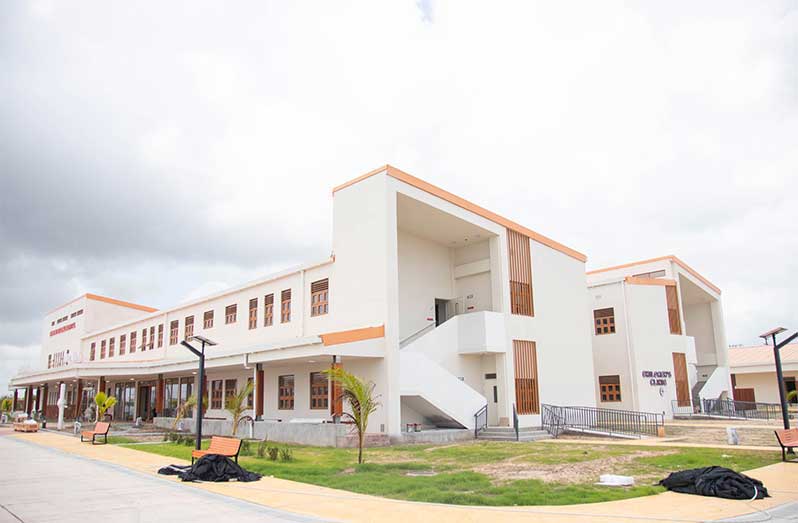 APNU’s leader, Aubrey Norton, made false claims about public-health infrastructure during a public meeting at Bagotville, West Bank Demerara, on Saturday.
APNU’s leader, Aubrey Norton, made false claims about public-health infrastructure during a public meeting at Bagotville, West Bank Demerara, on Saturday.
These types of statements by the opposition leader not only distort the facts, but also deny evidence of real progress for Guyanese.
Major investments within the health sector have resulted in substantial growth and increased capacity in both human resources and infrastructural enhancements since the PPP/C government assumed office in 2020.
Here are some of the investments made by the government to modernise Guyana’s healthcare:-
UPGRADED HEALTH INFRASTRUCTURE
A total of six new regional hospitals have been completed at an estimated cost of $38 billion and are fully equipped with trained staff and diagnostic services.
The Georgetown Public Hospital Corporation (GPHC) and other health facilities, including the Lethem and Diamond Regional Hospitals, are equipped with mammogram machines, X-ray machines, MRI machines, CT Scanners, ultrasound machines and operating theatres, providing critical services to patients.
Mammogram machines are also now available at the Suddie Hospital in Region Two, New Amsterdam Hospital in Region Six, and the Linden Hospital Complex in Region 10. These machines provide screening services to detect breast cancer, which turns out to be the leading cancer among women in Guyana.
Additionally:-
• 400 health facilities were upgraded at an estimated cost of $12.5 billion
• 26 new health centres were completed
• Construction works are ongoing for two nursing schools at an estimated cost of $1.9 billion
• Three new simulation centres are under construction at an estimated cost of $650 million
EXPANSION OF HUMAN RESOURCES
Considerable investments have been made to train and qualify health professionals nationwide.
In 2024, the largest cohort of health professionals graduated from the Georgetown School of Nursing as registered nurses, nursing assistants and midwives. They are currently working within the public health sector at hospitals across the country.
Additionally:
• Specialisation provided to over 200 doctors in various disciplines
• Over 100 doctors are employed, with an additional 100 planned in 2025
• 390 community health workers were employed across the country to support health centres
• The recruitment pipeline was expanded to employ over 6000 employees in the next three to five years
EXPANSION OF MEDICAL TRANSPORTATION
In emergency and non-emergency transportation, 41 road ambulances, 64 all-terrain vehicles, 25 water-transport units, and other vehicles were added to the health sector to enhance the movement of patients and healthcare staff.
Over $2.1 billion was spent on medical evacuations, allowing for less than one per cent downtime for patient transport. These efforts are part of the government’s commitment to deliver high-quality health services to the public.
DIRECT SUPPORT TO PATIENTS
The government has supported patients directly by providing cash grants and vouchers to access additional health services.
• $4.2 billion in cash payments for health services, including dialysis, heart and other care
• Approximately $7.5 billion in vouchers for eye, HPV and non-communicable health screening has been set aside
• A total of $1.6 billion in cash grants has been set aside for newborn babies
The country remembers that while in office, APNU seriously underfunded the health sector, highlighted by scandals such as the controversial $1.6 billion bond rental at Sussex Street, which caused public outrage.
Norton boldly repeated the false claim of a lack of health infrastructure at the APNU’s campaign launch on July 6, when in fact, while APNU was in government, it built no new major hospitals.
Adding salt to the wound was the ongoing drug shortage caused by poor management of the health sector, shown by many protests of healthcare workers.
The President Ali-led government has been progressively reshaping healthcare in Guyana by not only providing access to the most remote corners in the country, but also upskilling and incentivising a workforce that delivers quality healthcare for all Guyanese. (DPI)


.jpg)











